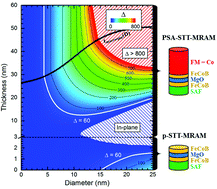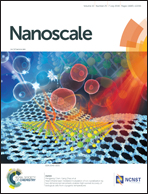A highly thermally stable sub-20 nm magnetic random-access memory based on perpendicular shape anisotropy
Abstract
A new approach to increase the downsize scalability of perpendicular STT-MRAM is presented. It consists of significantly increasing the thickness of the storage layer in out-of-plane magnetized tunnel junctions (pMTJ) as compared to conventional pMTJ in order to induce a perpendicular shape anisotropy (PSA) in this layer. This PSA is obtained by depositing a thick ferromagnetic (FM) layer on top of an MgO/FeCoB based magnetic tunnel junction (MTJ) so that the thickness of the storage layer is of the order of or larger than the diameter of the MTJ pillar. In contrast to conventional spin transfer torque magnetic random access memory (STT-MRAM) wherein the demagnetizing energy opposes the interfacial perpendicular magnetic anisotropy (iPMA), in these novel memory cells, both PSA and iPMA contributions favor the out-of-plane orientation of the storage layer magnetization. Using thicker storage layers in these PSA-STT-MRAMs has several advantages. Due to the PSA, very high and easily tunable thermal stability factors can be achieved, even down to sub-10 nm diameters. Moreover, a low damping material can be used for the thick FM material thus leading to a reduction of the write current. The paper describes this new PSA-STT-MRAM concept, practical realization of such memory arrays, magnetic characterization demonstrating thermal stability factor above 200 for MTJs as small as 8 nm in diameter and possibility to maintain the thermal stability factor above 60 down to 4 nm diameter.



 Please wait while we load your content...
Please wait while we load your content...